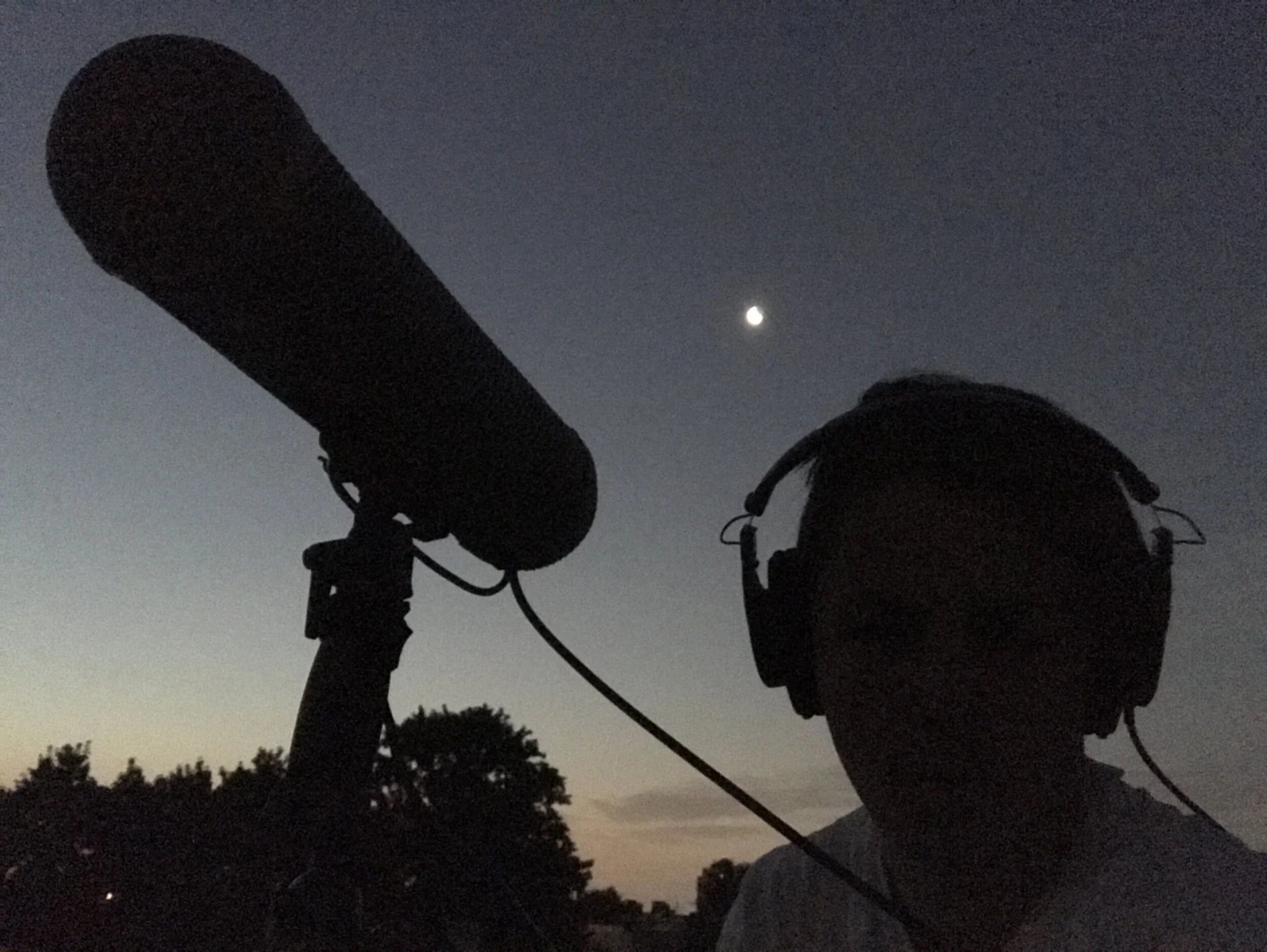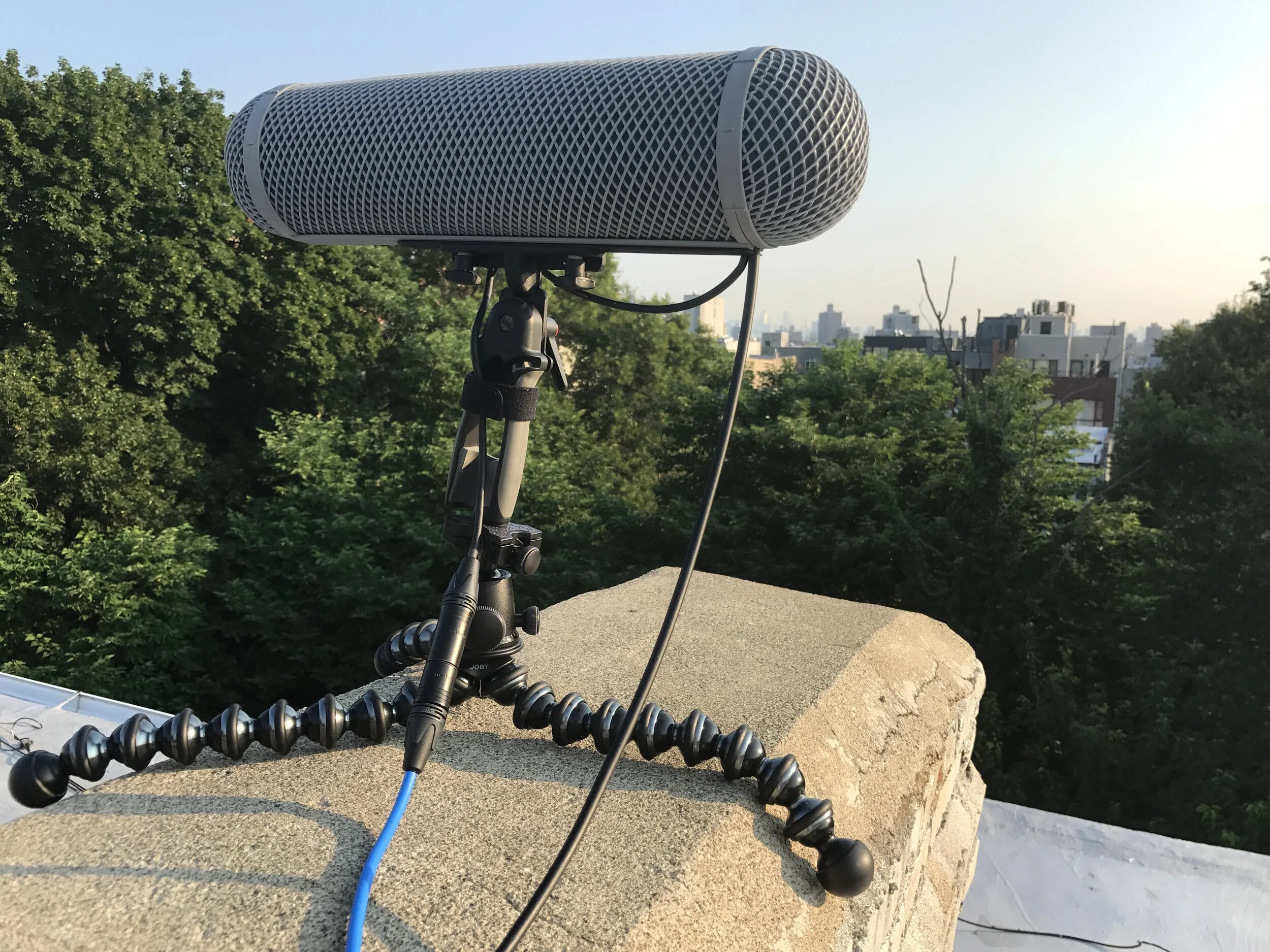Searching for Dawn Choruses in New York City
By Ben Mirin, Safina Center Launchpad Fellow
An alarm was going off somewhere in the street below. It sounded like an oven timer. The roar of an engine rose like a wave as a truck lurched onto my block, air brakes kicking on and off to bring fifteen tons of metal to a halt three doors down. A creak, a pneumatic hiss, and then a pause…and then the wave built again as it drove around the corner.
In Brooklyn there is never silence. I was up at 3:30am to record bird songs and even at this dark hour, millions of cars and people sent a vibrant hum through the city. To experience a bit of contrast from the regular sounds of my neighborhood, I got up an hour before sunrise, climbed to a friend’s roof and began recording the dawn.
Photo ©Ben Mirin
The best time to experience natural sound in New York is during a dawn chorus, when birds in a local habitat sing together to reclaim territories after a long dark night. It usually takes place an hour before sunrise, but to truly capture this crescendo of activity you have to be up and recording before it starts. It was 4:15, and I still had 90 minutes before daybreak. I waited and listened to the air conditioners on my building working overtime in the summer heat.
At 4:52, the first Northern Cardinal sang two soft plaintive notes. After a few test runs, he let loose with his full melody. In less than a minute there were three birds singing back and forth, calling to see who among their competitors was still around from the day before. An American Robin chimed in, and families of House Sparrows began restlessly squabbling in the rafters.
Photo ©Ben Mirin
Natural sound still has a place in New York, it just has to fight for airtime with everything else. There is extensive research to suggest that birds adjust the frequency of their calls to make themselves audible over city noise. In addition, diurnal birds like cardinals and robins often sing at night when the airwaves are less polluted with human commotion, and because city lights offset their circadian rhythms.
These behavioral changes are testaments to nature’s ability to adapt to a habitat of our own creation. In cities around the world, wild animals continue to live alongside our noise, our lights, our trash, and ourselves. Many native species are forced out or driven extinct, and those who survive are often ignored. The ones who thrive, we call pests. On an evolutionary scale, it’s a brand new kind of urban ecosystem, racing to keep up with human life with no end in sight.
Living in Brooklyn, I try to make adaptation a two-way street. I get up in the early morning, leave my ear buds at home, and give myself time for long walks in Prospect Park. Listening to natural sounds helps me recalibrate my place in the web of all life. I feel connected, attentive, and more human. I reconnect with my four-year-old self, the boy who went on owl walks at night, went to the zoo to feed ducks, and got lost in bird books before he knew how to read them.
These experiences do not have to be in the past. It is easy to forget that we have our own brand of wildness in New York, but if we tune in we can begin to understand our impact on life both within and beyond its walls. We should listen locally to act globally, and learn more about the rhythms of this city and the moments when it breathes. There are still days when I fail to do this, but I know I’ll never feel at home unless I keep trying.
By seven o’clock many more birds were awake. The cardinals had gone farther away, but a Common Grackle was flitting between the fenced-in backyards. Cedar Waxwings had taken up posts in the willow out front, and Chimney Swifts circled in small flocks overhead with lively chatter. After running uninterrupted through the entire night, the alarm in the street had finally stopped. I guess someone had finally had enough.
Ben Mirin is a Fellow at the Safina Center, a National Geographic Explorer, and a natural sounds recordist with the Cornell Lab of Ornithology. He records wildlife sounds around the world, and samples their voices to create music that teaches people about nature and inspires conservation.


